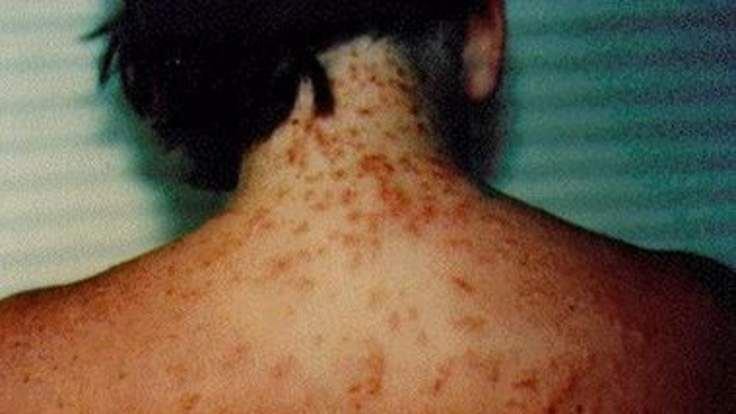Massive outbreak of tiny 'sea lice' that sting like jellyfish at Florida beaches

Tiny jellyfish larvae known as 'sea lice' are biting swimmers and bathers at Florida beaches causing painful red rashes. Health officials in the US state have warned locals and travellers to beaches, that being bitten can lead to an itchy rash and, in severe cases, difficulty in sleeping, nausea, vomiting, diarrhoea, headache and muscle spasms.
The outbreak has been reported along the Gulf of Mexico and the bites can often goes undetected for hours after they attack. The tiny marine pests are almost invisible to the naked eye in the water and can get trapped in swimming shorts with the lining acting as a net.
The painful bites are sometimes referred to as "ocean itch" or "sunbather's eruption" and lasts from a couple hours to several days. Once the adult jellyfish die after spawning, their larvae continue to cause the outbreaks.
"Outbreaks of seabather's eruption occur intermittently between March and August, but they appear to peak during early April through early July," according to the Florida Department of Health. "Seabather's eruption appears to be caused by shifts in South Florida's currents, with the highest incidence of cases in such areas as Palm Beach County and Northern Broward County, where the Gulf Stream passes closest to shore."
The Florida Department of Health say that the infestations are most prevalent between March and August along around 250 miles of Florida's southern Atlantic coastline, although Walton County's Santa Rosa Beach reported a huge outbreak earlier this week.
Palm Beach County, on the Atlantic Coast around 50 miles north of Miami, post sea lice signs to warn swimmers when there are outbreaks of the rashes at their beaches. Other seaside Florida counties hang purple flags at beaches to signal the presence of marine pests.
Outside of the physical pain of the bites the outbreak could prove costly for Florida's many beach towns that rely on tourism. "Beaches are the most important feature of Florida's brand, accounting for 25.5 percent of the state's attractiveness to visitors," a state economic report said.
Although hard to prevent once in the water, swimmers can lower the risk of a nasty rash by removing swimming costumes before they shower. Once bitten they can use calamine lotion or cooked oatmeal to ease the pain.
© Copyright IBTimes 2025. All rights reserved.






















